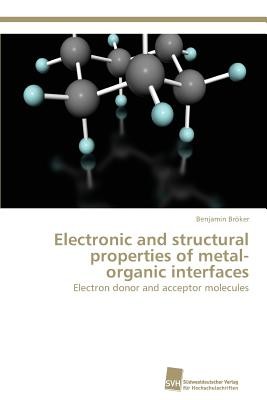
- We will send in 10–14 business days.
- Publisher: Sudwestdeutscher Verlag Fur Hochschulschriften AG
- Year: 2011
- Pages: 204
- ISBN-10: 3838129466
- ISBN-13: 9783838129464
- Format: 15.2 x 22.9 x 1.2 cm, softcover
- Language: English
- SAVE -10% with code: EXTRA
Electronic and structural properties of metal-organic interfaces (e-book) (used book) | bookbook.eu
Reviews
Description
The present publication is embedded in the field of organic electronics, in which optoelectronic devices are made from carbon-based materials. In these devices, charge injection is critically determined by the electronic and structural properties of the interfaces between the electrodes and the conjugated organic materials (COMs). Three main topics are addressed: energy level tuning with new and strong electron (i) donor and (ii) acceptor materials and (iii) the density dependent re-orientation of a molecular monolayer and its impact on the energy level alignment. Ideal techniques to investigate the electronic and structural properties at interfaces are photoelectron and reflection absorption infrared spectroscopy, on which the author gives a detailed introduction.
EXTRA 10 % discount with code: EXTRA
The promotion ends in 20d.19:33:57
The discount code is valid when purchasing from 10 €. Discounts do not stack.
- Publisher: Sudwestdeutscher Verlag Fur Hochschulschriften AG
- Year: 2011
- Pages: 204
- ISBN-10: 3838129466
- ISBN-13: 9783838129464
- Format: 15.2 x 22.9 x 1.2 cm, softcover
- Language: English English
The present publication is embedded in the field of organic electronics, in which optoelectronic devices are made from carbon-based materials. In these devices, charge injection is critically determined by the electronic and structural properties of the interfaces between the electrodes and the conjugated organic materials (COMs). Three main topics are addressed: energy level tuning with new and strong electron (i) donor and (ii) acceptor materials and (iii) the density dependent re-orientation of a molecular monolayer and its impact on the energy level alignment. Ideal techniques to investigate the electronic and structural properties at interfaces are photoelectron and reflection absorption infrared spectroscopy, on which the author gives a detailed introduction.


Reviews